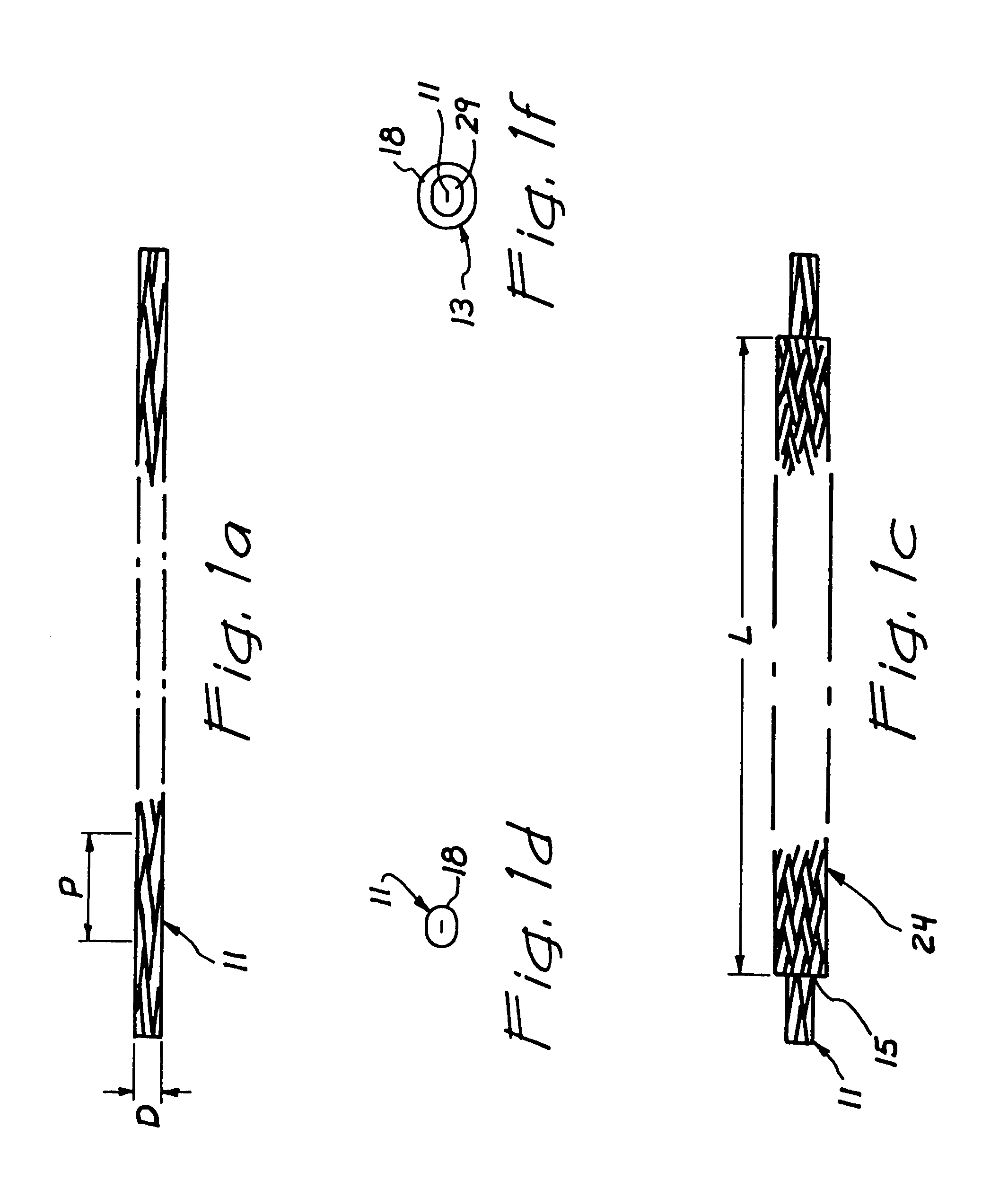Single-tailed suturing method
a single-tailed, suturing technology, applied in the field of suturing technique and the formation of suturing loops, can solve the problems of difficult knot knot development at best, limited surgeon's work space, and inability to perform surgery
- Summary
- Abstract
- Description
- Claims
- Application Information
AI Technical Summary
Problems solved by technology
Method used
Image
Examples
Embodiment Construction
[0047]Referring now more particularly to the drawings, FIG. 1a shows a tensioned suture 11 of a braided construction, in tension. The tension on the suture preferably sets characteristics of the suture so that it is of diameter D and pitch P. FIG. 1b shows the tensioned suture 11 loaded with axial compression to form a compressed suture 13, the suture braid being designed so that its pitch and diameter are affected by the axial compression on the suture by a factor “n” as shown. The factor “n” is of such a value that it makes possible the passage of the tensioned suture 11, having the diameter D, through the center of the compressed suture 13. The factor “n” is also of such a value that the interior of compressed suture 13 further provides for the passage of any instrument that is required for the manipulation of the suture.
[0048]In a preferred configuration, the factor “n” ranges in value from a minimum of about 1.5 to a maximum of about 15.0 in order to achieve acceptable performa...
PUM
 Login to View More
Login to View More Abstract
Description
Claims
Application Information
 Login to View More
Login to View More - R&D
- Intellectual Property
- Life Sciences
- Materials
- Tech Scout
- Unparalleled Data Quality
- Higher Quality Content
- 60% Fewer Hallucinations
Browse by: Latest US Patents, China's latest patents, Technical Efficacy Thesaurus, Application Domain, Technology Topic, Popular Technical Reports.
© 2025 PatSnap. All rights reserved.Legal|Privacy policy|Modern Slavery Act Transparency Statement|Sitemap|About US| Contact US: help@patsnap.com



